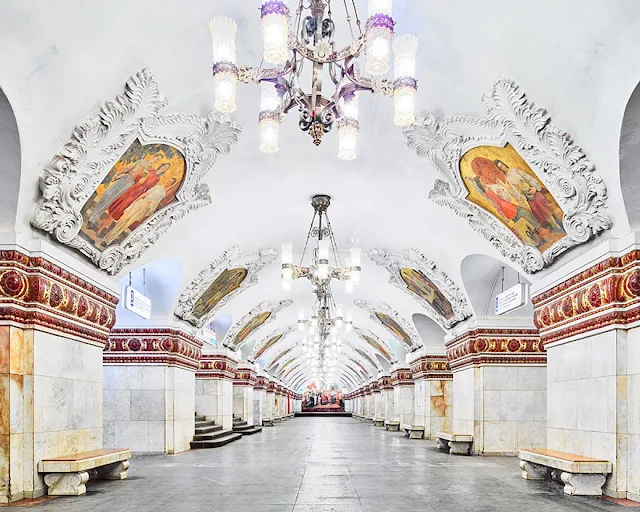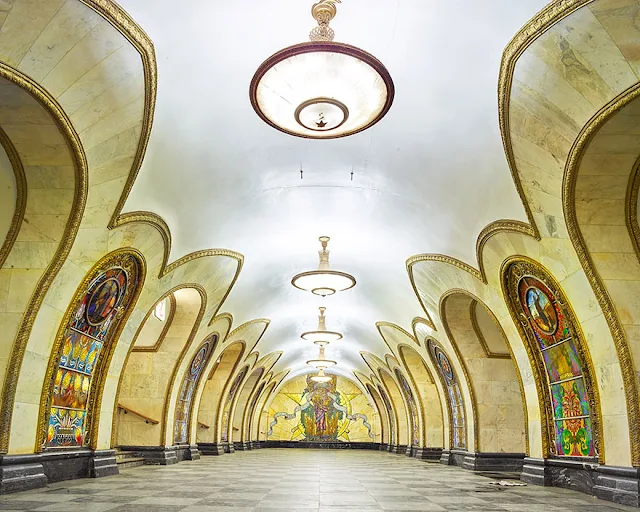Architecture Moscow 1935 Train Stations.
 |
Architecture Moscow 1935 Train Stations. |
 |
Elektrozavodskaya Metro Station, Moscow |
Avoto Metro Station, St. Petersburg.
Beneath the bustling streets of Moscow lies a hidden treasure trove of architectural marvels: the Moscow metro stations. These subterranean wonders, adorned with exquisite design elements, serve as a testament to the grandeur and ambition of the Soviet era. Stepping into these underground palaces is like entering a time capsule, transporting visitors to an era marked by innovation, propaganda, and artistic expression.
The Moscow Metro, inaugurated in 1935, was not merely a transportation network but a symbol of Soviet prowess and progress. Designed to embody the ideals of socialism and modernity, each station was meticulously crafted to evoke a sense of awe and admiration among commuters. The guiding principles of "svet" (light) and "sveltloe budushchee" Sveltloe budushchee" is a Russian phrase that translates to "bright future" in English. It refers to the concept of a radiant and promising future, often associated with optimism and aspirations for progress. In the context of the discussion about the Moscow Metro, it represents one of the guiding design principles behind the construction of the metro stations, reflecting the Soviet vision of a prosperous and utopian society. (bright future) permeated every aspect of the metro's architecture, from its grandiose entrances to its intricately decorated platforms.
One cannot overlook the role of propaganda in shaping the aesthetic of the Moscow Metro. As a tool of the Soviet state, the metro served as a canvas for promoting communist ideology and glorifying the achievements of the regime. Busts of revered Soviet leaders such as Lenin adorned the stations, while elaborate wall murals depicted scenes of collective labor and triumph over adversity. The iconic "Homo Sovieticus" motif, symbolizing the ideal Soviet citizen, was a recurring theme in the Metro's artwork, reinforcing the narrative of unity and progress under socialism.
But beyond its ideological significance, the Moscow Metro also reflected the artistic sensibilities of its time. Drawing inspiration from classical Russian architecture, the stations exuded a sense of grandeur and opulence, with vaulted ceilings, marble columns, and intricate mosaics adorning their interiors. Each station was a work of art in its own right, showcasing the talent and creativity of the architects, artists, and craftsmen involved in its construction.
David Burdeny's photographic series, "Russia: A Bright Future," offers a glimpse into the timeless beauty of the Moscow Metro. Through his lens, he captures the essence of these architectural masterpieces, inviting viewers to marvel at their splendor and significance. From the majestic halls of Komsomolskaya to the futuristic allure of Mayakovskaya, Burdeny's images transport us to a bygone era, where art and ideology converged in the heart of the Soviet capital.
 |
| Moscow( Metro Station, Moscow 1935 Soviet Era Architecture and Design. |
www.MiamiArtReviews.com Contact Us MiamiArtReviews@gmail.com



Post a Comment